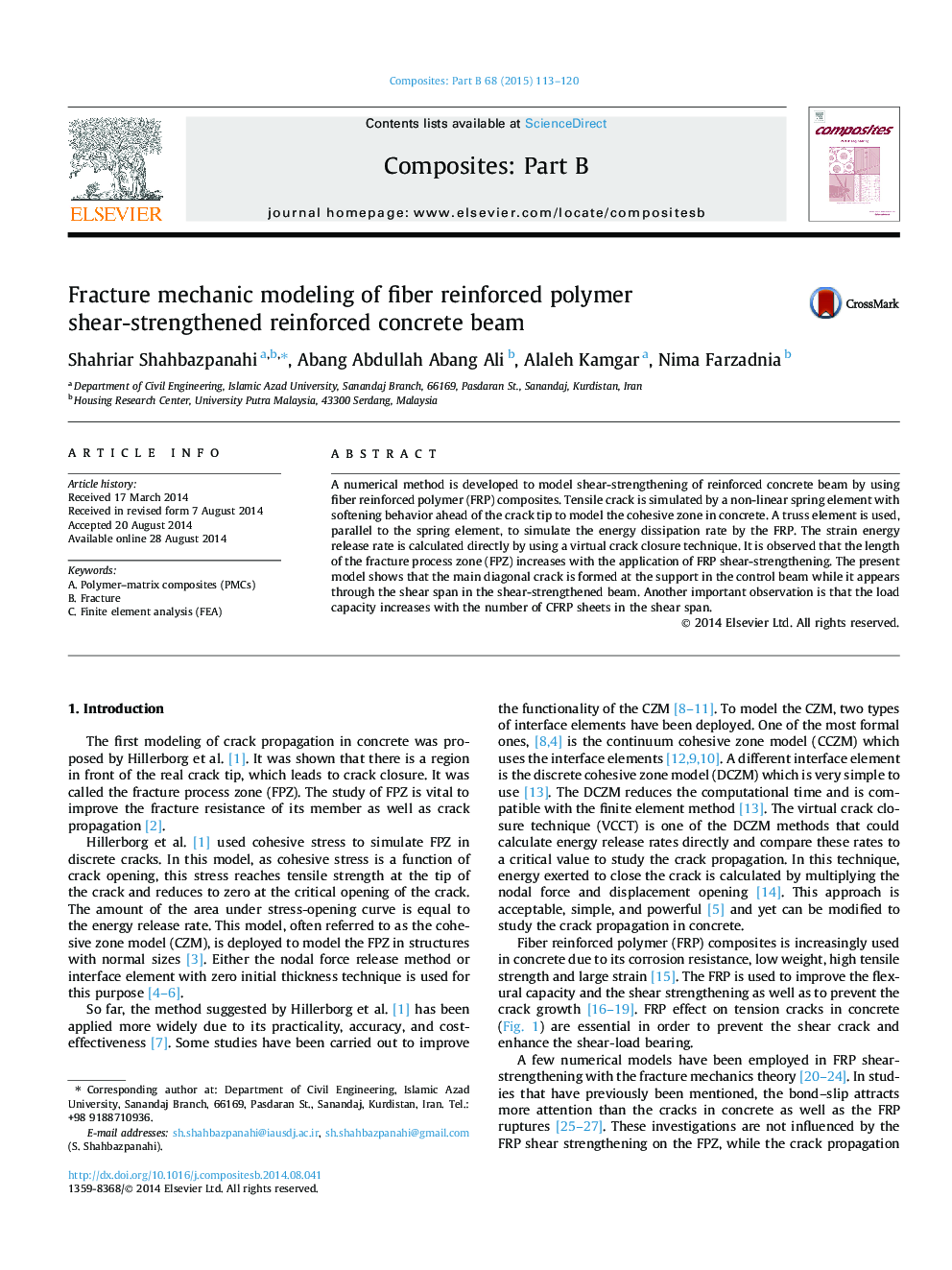| Article ID | Journal | Published Year | Pages | File Type |
|---|---|---|---|---|
| 7213193 | Composites Part B: Engineering | 2015 | 8 Pages |
Abstract
A numerical method is developed to model shear-strengthening of reinforced concrete beam by using fiber reinforced polymer (FRP) composites. Tensile crack is simulated by a non-linear spring element with softening behavior ahead of the crack tip to model the cohesive zone in concrete. A truss element is used, parallel to the spring element, to simulate the energy dissipation rate by the FRP. The strain energy release rate is calculated directly by using a virtual crack closure technique. It is observed that the length of the fracture process zone (FPZ) increases with the application of FRP shear-strengthening. The present model shows that the main diagonal crack is formed at the support in the control beam while it appears through the shear span in the shear-strengthened beam. Another important observation is that the load capacity increases with the number of CFRP sheets in the shear span.
Related Topics
Physical Sciences and Engineering
Engineering
Engineering (General)
Authors
Shahriar Shahbazpanahi, Abang Abdullah Abang Ali, Alaleh Kamgar, Nima Farzadnia,
